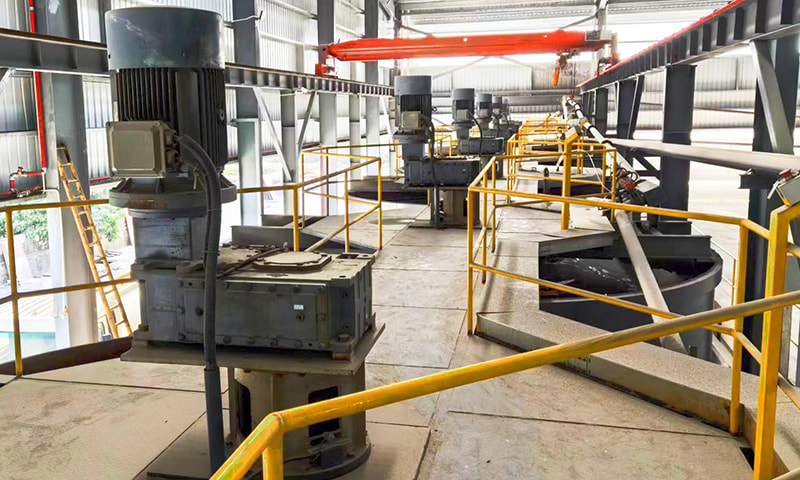In the contemporary manufacturing landscape, the demand for precision and efficiency has become paramount. One of the transformative technologies in this regard is the vertical cutting machine. Designed for high-precision operations across a variety of materials—including stone, metal, and tiles—vertical cutting machines have redefined production standards by offering cutting accuracy and optimized workflow.
Automation and Precision in Vertical Cutting Machine
The vertical cutting machine excels in delivering automated precision, which is critical for industries where minimal deviation can significantly impact product quality. Modern vertical cutting saws integrate advanced control systems, allowing for consistent performance and precise material handling. These machines are particularly valuable in applications such as stone block processing, metal sheet cutting, and tile fabrication. The automation ensures that repetitive cuts are performed with exact uniformity, reducing human error and enhancing overall productivity.
Automation in vertical cutting machines also contributes to time efficiency. Operators can set pre-defined cutting paths and parameters, ensuring that the machine executes tasks without constant manual intervention. This capability is essential for production lines that demand high throughput while maintaining strict quality standards.
Material Versatility and Application Range
Vertical cutting machines are versatile tools capable of handling diverse materials. Depending on the blade type and machine configuration, these machines can cut through dense materials like marble and granite, as well as metals such as aluminum and steel. Their adaptability makes them indispensable across construction, manufacturing, and industrial sectors.
The precision offered by vertical cutting machines ensures minimal material wastage. By delivering exact cuts according to specifications, manufacturers can optimize resource utilization and reduce costs associated with excess material consumption. Furthermore, these machines can be integrated into fully automated production lines, enabling seamless coordination with upstream and downstream processes.
Technological Features Enhancing Performance
Key features of vertical cutting machines significantly enhance their performance:
| Feature | Description | Benefit |
|---|---|---|
| CNC Control | Allows programmed cutting paths for high-precision operations | Reduces human error, ensures consistency |
| Automatic Blade Adjustment | Adjusts blade height and angle automatically based on material type | Increases cutting accuracy and reduces setup time |
| High-Speed Servo Motors | Provide stable cutting speed for consistent results | Enhances productivity and surface finish quality |
| Dust and Debris Management | Integrated collection systems to reduce workplace contamination | Improves safety and machine longevity |
| Multi-Material Compatibility | Enables cutting of stone, metal, tiles, and composite materials | Expands application range |
Impact on Industrial Production Lines
The integration of vertical cutting machines into production lines has had a profound impact on industrial workflows. Automated cutting processes allow manufacturers to maintain a high output rate without compromising quality. Unlike traditional cutting methods, which rely heavily on manual labor, vertical cutting machines reduce the dependency on skilled operators for routine tasks, freeing human resources for supervisory and quality control functions.
Additionally, vertical cutting machines equipped with CNC control can easily adapt to varying product specifications. This adaptability is critical for industries that require frequent design changes or custom orders. By programming new cutting paths, manufacturers can maintain flexibility without incurring significant downtime or retooling costs.
Advantages in Safety and Sustainability
Safety is another critical advantage of vertical cutting machines. Enclosed cutting areas, automated material handling, and debris management systems minimize workplace hazards. Operators can supervise multiple machines simultaneously without being exposed to sharp blades or flying debris.
From a sustainability perspective, precise cutting reduces waste and optimizes material usage. Automated cutting paths prevent unnecessary scrap, contributing to cost savings and environmentally responsible production practices. Furthermore, the energy efficiency of modern vertical cutting machines ensures minimal power consumption while delivering high-performance output.
Optimizing Maintenance and Longevity
Maintenance of vertical cutting machines is streamlined through integrated diagnostic systems. These systems monitor blade condition, motor performance, and operational parameters, alerting operators to potential issues before they escalate. Regular maintenance ensures consistent machine performance, extends service life, and reduces unexpected downtime.
Proper maintenance practices include periodic blade replacement, lubrication of moving parts, and calibration of CNC systems. When combined with automated monitoring, these practices guarantee that vertical cutting machines operate at peak efficiency throughout their service life.
Conclusion
The vertical cutting machine has emerged as a cornerstone of modern manufacturing, offering unmatched precision, versatility, and efficiency. Its automation, CNC control, and material compatibility make it indispensable in stone, metal, and tile processing, while its integration into production lines enhances overall workflow and productivity. By prioritizing accuracy, safety, and sustainability, vertical cutting machines not only meet the current demands of industrial production but also set a standard for future advancements.






